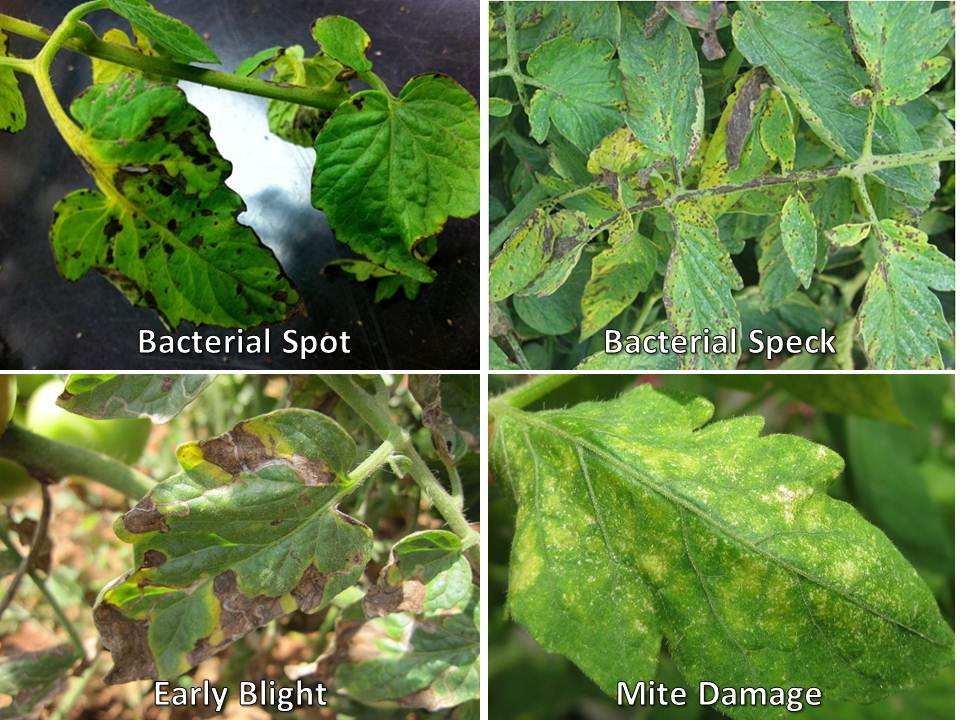What Is It? | Facts in Depth | For the Professional Diagnostician
Tomato Diseases | Bacterial Canker Fact Sheets
Bacterial Canker
Identification
Early Infections on Seedlings:
- Originate from seed
- Cause severe symptoms
- Wilting and stunting
- Open cankers on the stem
- A thin, reddish-brown discoloration can be seen inside the stem when the stems are split open length wise
Late Infections on Plants:
- Symptoms observed in the field
- Browning of the outer edges of the leaflets with a thin yellow band of tissue
- Curling upwards of leaflet edges
Late Infections on Fruit:
- Small tan colored spots surrounded by a white halo on green or red fruit that resemble bird’s eyes-hence the term “bird’s-eye” spots



Pictures of Bacterial Canker on tomato fruit (left) and the stem and leaves of a pepper plant (center; right).
Favorable Environmental Conditions
- Warm temperatures (75-90 °F)
- High moisture
- High relative humidity
Often Confused With
- Bacterial Leaf Spot
- Bacterial Speck
- Early Blight
- Mite Damage

Scouting Notes
- The pathogen can be active from the time of plant emergence through to harvest.
- Seedlings in the greenhouse should be carefully monitored for early symptoms and suspect plants should be removed from the greenhouse and submitted for plant disease diagnosis.
- Plants in the field or greenhouse should be monitored twice a week. If disease symptoms are observed, remove the affected plant and adjacent healthy appearing plants.
